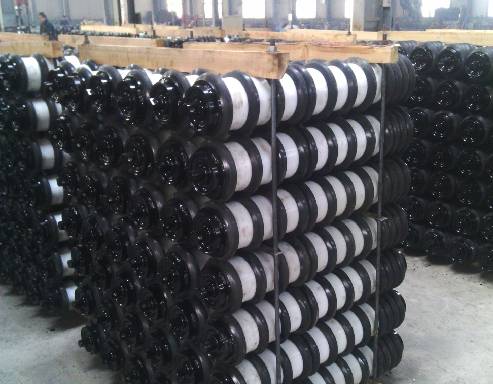 Afrikaans
Afrikaans  Albanian
Albanian  Amharic
Amharic  Arabic
Arabic  Armenian
Armenian  Azerbaijani
Azerbaijani  Basque
Basque  Belarusian
Belarusian  Bengali
Bengali  Bosnian
Bosnian  Bulgarian
Bulgarian  Catalan
Catalan  Cebuano
Cebuano  Corsican
Corsican  Croatian
Croatian  Czech
Czech  Danish
Danish  Dutch
Dutch  English
English  Esperanto
Esperanto  Estonian
Estonian  Finnish
Finnish  French
French  Frisian
Frisian  Galician
Galician  Georgian
Georgian  German
German  Greek
Greek  Gujarati
Gujarati  Haitian Creole
Haitian Creole  hausa
hausa  hawaiian
hawaiian  Hebrew
Hebrew  Hindi
Hindi  Miao
Miao  Hungarian
Hungarian  Icelandic
Icelandic  igbo
igbo  Indonesian
Indonesian  irish
irish  Italian
Italian  Japanese
Japanese  Javanese
Javanese  Kannada
Kannada  kazakh
kazakh  Khmer
Khmer  Rwandese
Rwandese  Korean
Korean  Kurdish
Kurdish  Kyrgyz
Kyrgyz  Lao
Lao  Latin
Latin  Latvian
Latvian  Lithuanian
Lithuanian  Luxembourgish
Luxembourgish  Macedonian
Macedonian  Malgashi
Malgashi  Malay
Malay  Malayalam
Malayalam  Maltese
Maltese  Maori
Maori  Marathi
Marathi  Mongolian
Mongolian  Myanmar
Myanmar  Nepali
Nepali  Norwegian
Norwegian  Norwegian
Norwegian  Occitan
Occitan  Pashto
Pashto  Persian
Persian  Polish
Polish  Portuguese
Portuguese  Punjabi
Punjabi  Romanian
Romanian  Russian
Russian  Samoan
Samoan  Scottish Gaelic
Scottish Gaelic  Serbian
Serbian  Sesotho
Sesotho  Shona
Shona  Sindhi
Sindhi  Sinhala
Sinhala  Slovak
Slovak  Slovenian
Slovenian  Somali
Somali  Spanish
Spanish  Sundanese
Sundanese  Swahili
Swahili  Swedish
Swedish  Tagalog
Tagalog  Tajik
Tajik  Tamil
Tamil  Tatar
Tatar  Telugu
Telugu  Thai
Thai  Turkish
Turkish  Turkmen
Turkmen  Ukrainian
Ukrainian  Urdu
Urdu  Uighur
Uighur  Uzbek
Uzbek  Vietnamese
Vietnamese  Welsh
Welsh  Bantu
Bantu  Yiddish
Yiddish  Yoruba
Yoruba  Zulu
Zulu Exploring the Benefits and Types of Conveyor Pulley Lagging for Enhanced Performance and Durability
Understanding Conveyor Pulley Lagging Importance and Types
Conveyor systems play a vital role in various industries, facilitating the efficient movement of materials across different stages of production and distribution. One of the crucial components in these systems is the conveyor pulley, which is essential for directing and controlling the movement of the conveyor belt. To optimize the performance and longevity of conveyor pulleys, lagging is employed. This article explores the significance of conveyor pulley lagging, its types, and its impact on overall conveyor performance.
What is Conveyor Pulley Lagging?
Lagging refers to the process of applying a protective layer or coating to the surface of a conveyor pulley. This layer serves multiple purposes, including improving traction, reducing wear and damage to the pulley, and enhancing the belt's performance. By providing a suitable surface for the belt to grip, lagging minimizes slippage, which is crucial for maintaining efficient material movement.
Importance of Lagging
1. Enhanced Traction One of the primary benefits of lagging is increased friction between the conveyor belt and the pulley. The textured surface of the lagging material improves the contact area, thereby enhancing traction. This is particularly important in applications with steep inclines or heavy loads, where adequate grip is necessary to prevent slippage.
2. Wear Resistance Conveyor pulleys are subjected to significant wear and tear due to constant friction and material movement. Lagging acts as a protective barrier, reducing the direct impact on the pulley surface. This not only extends the pulley's lifespan but also minimizes maintenance costs, thereby improving the overall efficiency of the conveyor system.
3. Reduced Noise Levels Conveyor systems can generate considerable noise, which may be a concern in various working environments. Certain lagging materials are designed to absorb sound, thereby reducing noise levels associated with conveyor operation. This can enhance workplace comfort and safety for operators.
4. Improved Material Handling Proper lagging can also contribute to the effective handling of bulk materials. By ensuring that the conveyor belt operates smoothly without slipping, lagging facilitates the efficient transfer of materials from one point to another, reducing the risk of material spillage or loss.
conveyor pulley lagging

Types of Lagging
There are several types of lagging available, each designed to meet specific operational needs
1. Rubber Lagging Commonly used due to its flexibility and durability, rubber lagging offers excellent traction and wear resistance. It is ideal for applications involving heavy loads and harsh environments.
2. Ceramic Lagging For particularly demanding applications, ceramic lagging provides superior wear resistance and is often used in industries dealing with abrasive materials. The ceramic tiles integrated into the lagging surface enhance traction and significantly prolong the pulley's lifespan.
3. Polyurethane Lagging This type of lagging is advantageous for environments where temperature variations are common. Polyurethane lagging offers excellent resistance to wear, chemicals, and abrasion while providing good traction.
4. Steel Lagging In applications requiring extreme durability and strength, steel lagging might be used. This type of lagging can withstand heavy impacts and is generally preferred in mining operations or heavy-duty industrial settings.
Conclusion
Conveyor pulley lagging is a critical component that significantly contributes to the efficiency, safety, and longevity of conveyor systems. By improving traction, reducing wear, and enhancing material handling, the right lagging choice can lead to notable operational benefits. Industries must carefully consider the type of lagging that best suits their specific applications to maximize the performance and reliability of their conveyor systems. As technology advances, innovations in lagging materials and designs continue to emerge, promising even greater efficiencies in the future.
-
Revolutionizing Conveyor Reliability with Advanced Rubber Lagging PulleysNewsJul.22,2025
-
Powering Precision and Durability with Expert Manufacturers of Conveyor ComponentsNewsJul.22,2025
-
Optimizing Conveyor Systems with Advanced Conveyor AccessoriesNewsJul.22,2025
-
Maximize Conveyor Efficiency with Quality Conveyor Idler PulleysNewsJul.22,2025
-
Future-Proof Your Conveyor System with High-Performance Polyurethane RollerNewsJul.22,2025
-
Driving Efficiency Forward with Quality Idlers and RollersNewsJul.22,2025





























